Fans of Rich Piana know that he was never a fan of the conventional. While most supplement companies are happy to get by marketing workout supplements, Rich and 5% Nutrition innovated in more ways than we can count -- and one of them was with all-inclusive health supplements that are all the range over 6 years after this one originally came out!
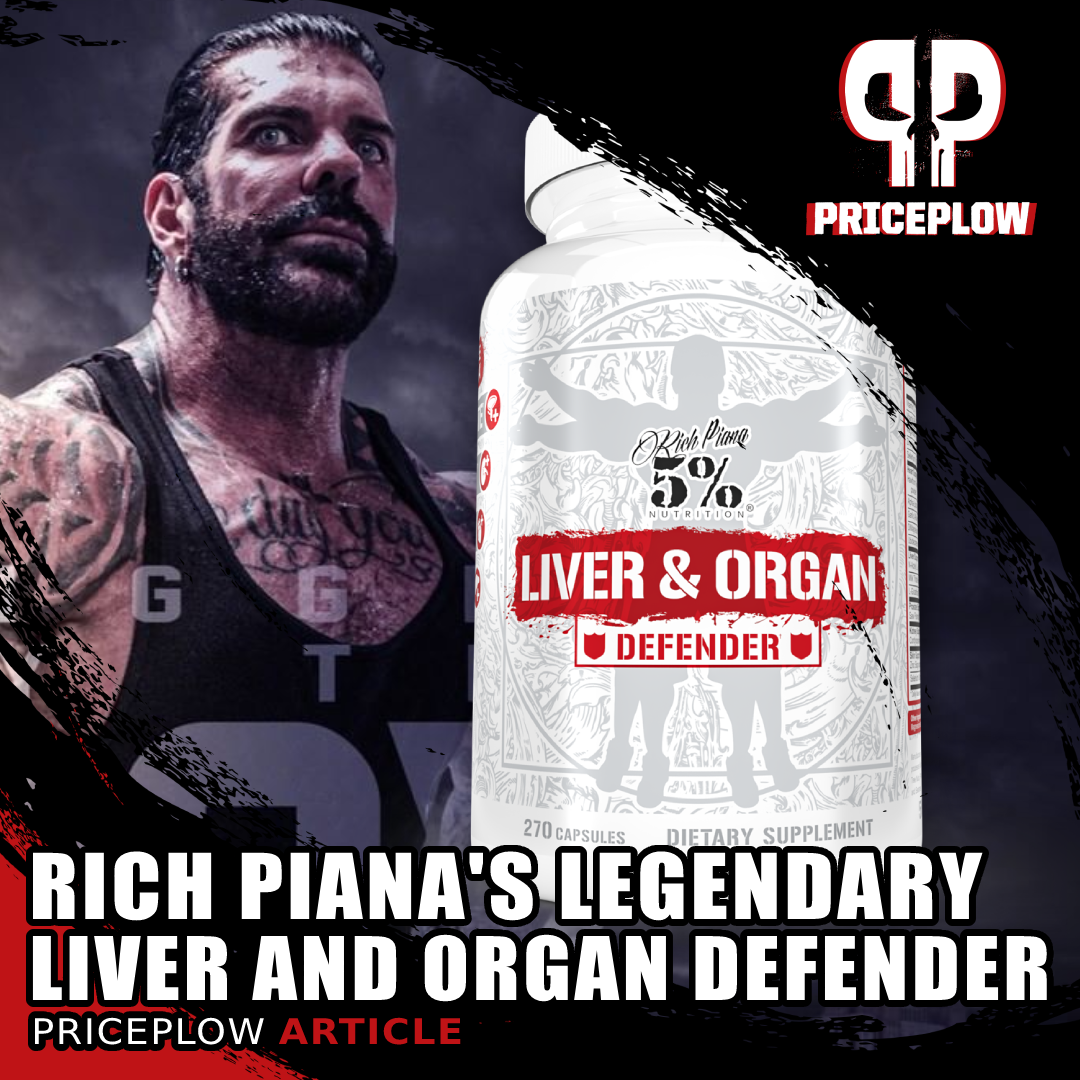
Back before these crazy organ health supplements were everywhere, one man and his company innovated them: Rich Piana and 5% Nutrition. Now it's updated for the white legendary look, and we've updated this article with more research.
5% Nutrition's Liver and Organ Defender contains ingredients that will protect the organs that are important to everyone -- but especially vital to most bodybuilders. This means supporting your liver, heart, kidneys, prostate, and even your skin to keep them functioning optimally no matter what you put your body through!
On cycle support with Rich Piana's Liver and Organ Defender
We recently covered the newer 5% Nutrition Post Gear supplement, which is to be used as an adjunct support supplement alongside your post cycle therapy regimen. However, this one's for on cycle support, and it brings the house - with nine capsules to be taken per day (three capsules, three times a day with meals).
Liver and Organ Defender is a no-joke health support supplement. But what's even crazier is that Rich Piana saw the future with formulas like this one. These types of health formulas are now becoming commonplace in the sports nutrition market. But Rich was there first -- and it's still just as good as it ever was! Only now, the label's been updated to the white Legendary series, just like All Day You May, Kill It Reloaded, and many others to come.
What does Rich have in store for us? We'll get to that in a second, but first take a second to sign up for PricePlow alerts and sign up for the best deal:
Rich Piana 5% Nutrition Liver & Organ Defender – Deals and Price Drop Alerts
Get Price Alerts
No spam, no scams.
Disclosure: PricePlow relies on pricing from stores with which we have a business relationship. We work hard to keep pricing current, but you may find a better offer.
Posts are sponsored in part by the retailers and/or brands listed on this page.
Liver & Organ Defender Ingredients
Packed in nine capsules (yes, nine - space them out across three meals!) you will get all of the following:
-
Heart Support
-
Hawthorn Berry (Crataegus laevigata)(fruit) powder - 1,100 mg
As big and bold as ever, the 5% Nutrition Liver and Organ Defender Ingredients come in nine capsules, split three times a day with meals
Various species of the hawthorn plant have been used as a natural heart remedy for centuries. More recent studies have shown that it's effective in treating arrhythmias and congestive heart failure[1,2] as well as hypertension.[3,4]
This is why we sometimes see it in nitric oxide boosting supplements, so you may get an additional off-label benefit there as well. Reason being, hawthorn extract can help expand blood vessels by increasing the release of nitric oxide.[3,4] It's been shown to lower both systolic and diastolic blood pressure in subjects with moderately high blood pressure.[4]
-
Alpha-Lipoic Acid - 400 mg
Known as ALA, alpha lipoic acid is a fatty acid that resides in the mitochondria that is involved in energy metabolism. It terms of heart-health benefits, ALA improves blood flow and improves the function of the muscles that line the blood vessels of the heart.[5]
Love carbs and need to drive them home? Then join the FREAK SHOW, which also has ALA
We recently covered another form of Alpha Lipoic acid in our article on 5% Nutrition's Freak Show (a glucose disposal agent supplement for carb-lovers), since there are benefits with regards to high blood sugar levels, its antioxidant activity, and its ability to stimulate AMPK for energy.[6-14] These benefits are not directly linked to heart health, but are absolutely paramount in terms of supporting greater organ health in general.
ALA is an underrated ingredient and we're excited to see it dosed so well here.
Note: don't confuse this ALA with alpha linolenic acid, which is an omega-3 fatty acid that is different from this.
-
Garlic (Allium sativum L.)(bulb) Extract - 300 mg
Garlic provides numerous benefits in terms of heart health. Garlic helps protect against abnormal heart growth,[15] atherosclerosis,[16] and high blood pressure.[17]
Additional immunity!
Garlic also provides great immunity benefits, which is important to keeping your organs running properly. Recently, we've learned that garlic has outperformed popular antiviral drugs in terms of reducing parasitic load,[18] and is known to inhibit some coronaviruses that cause bronchitis.[19] One of its incredible mechanisms is that it can inhibit ACE-2 docking.[20]
This is why we highly recommend garlic when feeling under the weather, but it's great to see it in an organ-supporting supplement as well.
-
DiMagnesium Malate - 250 mg
Magnesium is an essential mineral the body needs to perform over 300 of functions! Next to Vitamin D, it's the second most common nutrient deficiency in people.[21]
With regards to heart health, low levels of magnesium can lead to elevated blood pressure and impaired cardiac function.[22,23] It's also extremely important for proper insulin sensitivity and good blood glucose control.[24-26]
To keep your ticker pumping on all cylinders, it's of utmost importance to get your daily needs of magnesium - and this alone may not be enough depending on your diet, so make sure you consider a bit more before bed.
-
Ubidecarenone (Co-Q10) - 25 mg
Coenzyme Q10 (also known as ubidecarenone and CoQ10) is a compound found in the mitochondria that supports energy metabolism. In terms of heart health, it can improve cardiac function, blood flow, and raise HDL (good) cholesterol levels.[27-29]
There are literally entire books written about how CoQ10 can help the heart, so we're clearly just scratching the surface here. If looking for an incredible all-encompassing free review that details the majority of its benefits, see the paper published in The Journal of Pharmacy and Bioallied Sciences titled "Coenzyme Q10: The Essential Nutrient".[30]
-
-
Liver Support
You can't have a liver support supplement without great doses of these first two ingredients:
-
N-Acetyl L-Cysteine - 1,000 mg
N-Acetyl Cysteine (NAC) is the main substrate for glutathione, which you'll also find in this complex. Through the buffering of glutathione, NAC confers many benefits in regards to protecting the liver and providing antioxidant support to the body.[31,32]
The benefits of NAC are vast, and to cover a majority of them, we suggest reading the 2017 review titled "A Review on Various Uses of N-Acetyl Cysteine" that was published in Cell.[33] One of the areas of focus is how NAC helps treat and protect against acetaminophen hepatotoxicity.[34,35]
Many may appreciate how NAC is helpful in fighting alcohol toxicity.[36-39]
-
Milk Thistle Powder (Seed) - 600 mg
5% Nutrition Post Gear is a PCT Support Supplement that has a few new things and should bring you a few very fun weeks - even after the cycle's over!
Covered in depth in our 5% Nutrition Post Gear article, 5% Nutrition put three times the amount of milk thistle here in Organ and Liver Defender, although this one is likely more of a full-spectrum.
In that article, we focus on this "liver tonic"[40] and the numerous consequences it can protect against:
- Fighting drug-induced liver disease[41-43]
- Improve liver function after alcohol abuse[44-49]
- Improvements against general liver toxicity (cohort studies)[50-52]
- Protection from environmental toxins[53]
- Added meta analyses for other liver diseases[54,55]
A lot of the research was performed in Germany in the 1970s, and not all has been translated, but we're extraordinarily confident in milk thistle as a liver detoxification ingredient - especially at this large of a dose.
-
L-Glutathione (TwinTiger) - 30 mg
Glutathione is a non-essential amino acid that is vital to removing free radicals from the body.[56,57] Many consider it the master antioxidant. However, the body's production of glutathione is limited by how much cysteine is available, which is why supplementing N-Acetyl Cysteine is so beneficial.
Most products include one or the other, with most using NAC since glutathione isn't very orally bioavailable.[58] However, it still may provide some benefits, and we love Rich Piana's go big or go home approach -- why not do both?! This makes a strong one-two punch in liver protection through this pathway.
-
-
Prostate Support
-
Saw Palmetto (Serenoa repens)(berry) - 1,000 mg
LEGENDARY Status: 5% Nutrition's All Day You May also moved to the white tub, and the formula was also mostly unchanged. See how Rich Piana shattered the industry with this supplement, especially with that Southern Sweet Tea flavor!
All guys know keeping prostate growth at bay becomes increasingly more important as the years go by. Enlarged prostate is one of the earliest signs of prostate cancer. Fortunately, 5% Nutrition includes saw palmetto to suppress prostate growth.[59,60]
This has been known for quite some time - a 1998 meta analysis looked at 18 different randomized controlled trials on nearly 3,000 males, and found that the ingredient consistently improves peak urinary flow and reduces nighttime urination and lowers urinary tract symptom scores.[60] It even compares well to popular prescription drugs, but with fewer side effects![60]
So if you're tired of getting up in the middle of the night, or have urinary flow and bladder clearance that's less-than-spectacular, this alone is worth a shot - and as always in this supplement, it's no small dose!
-
-
Kidney Support
-
Cordyceps sinensis (whole) - 500 mg
Cordyceps is a mushroom that was traditionally used in Chinese medicine as an anti-aging compound. More recently, it's been included in supplements to aid the body in combating stress and delays the onset of fatigue.[61]
However, with regards to Organ and Liver Defender, cordyceps has been shown to prevent proliferation of kidney cells.[62] It's also been used to in renal transplant patients to ensure a successful implantation and offset any possibility the body's internal defense systems attack the new organ.[63]
-
-
Skin Support
In both of the ingredients below, note that 5% Nutrition is using high-quality, bioavailable minerals that have been bound to amino acids for better uptake. Minerals are not traditionally absorbed well by the small intestine, but amino acids like glycine are -- so binding them together gets you vastly improved uptake! We cannot emphasize this enough when looking at minerals like zinc.
-
Zinc Bisglycinate Chelate (TRAACS) - 300 mg (yielding 30 mg / 273%)
Zinc is another essential mineral the body uses to regulate many enzymes and support the immune system.
We repeatedly talk about its immune benefits, but what you may not realize is that zinc can do wonders for your skin! Not only can it help fight acne.[64], but it's also beneficial in preventing the growth of warts (topical) and psoriasis.[65,66]
With regards to absorption, the glycine-bound form of zinc here has outperformed other popular forms like zinc oxide (which is awful), zinc gluconate, and zinc sulfate in humans[67,68] and animals.[69]
-
Selenium Glycinate (Albion) - 7,000 mcg (yielding 70 mcg / 127% DV)
Our final ingredient in this protective tour de force is another essential mineral for the body. In addition to helping give you a shiny coat, selenium can improve skin elasticity and prevent the spread of acne -- especially when paired with NAC and milk thistle, which are both in here as well![70]
-
Dosing
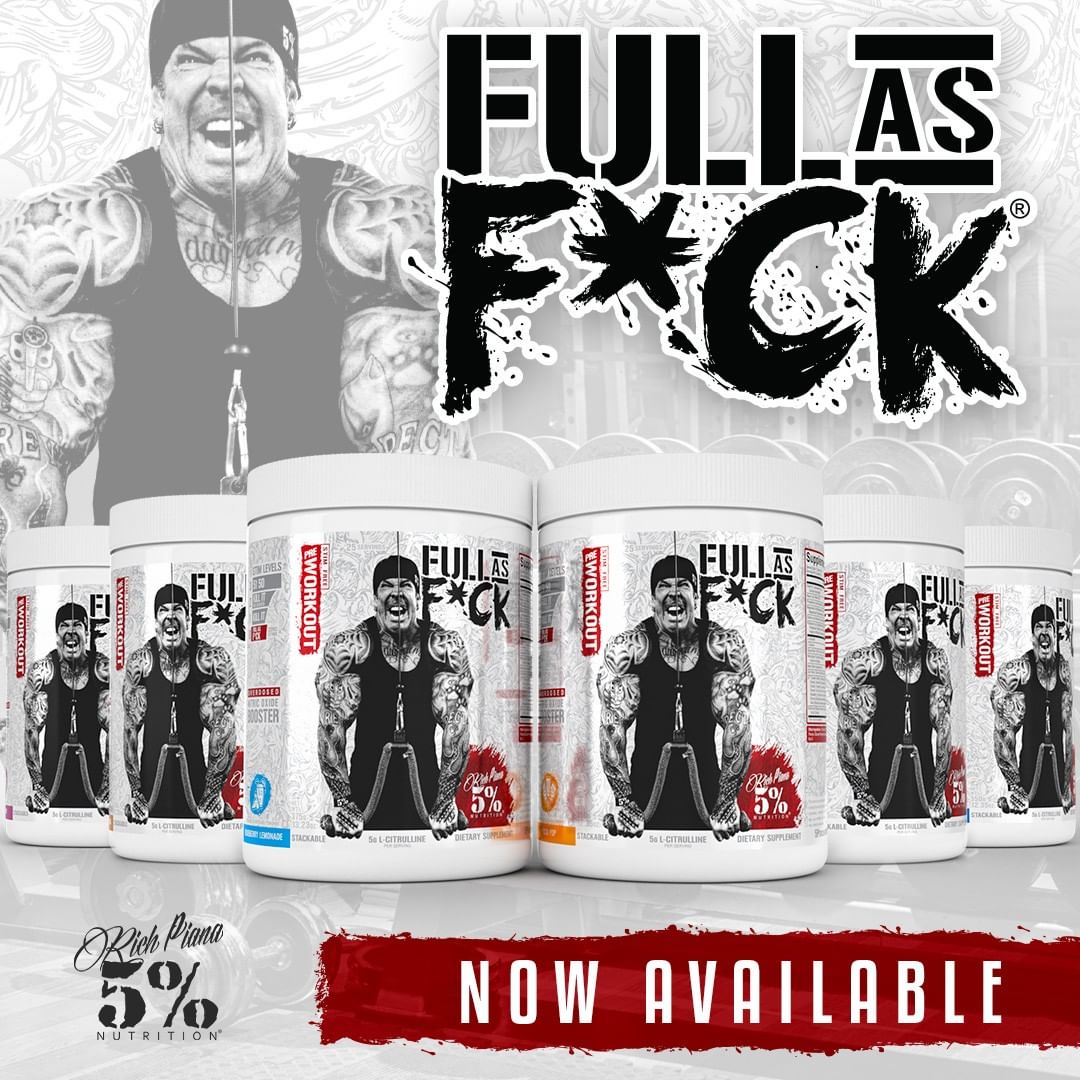
The Legendary Series at 5% Nutrition just got a boost with this one. Follow along in our 5% Nutrition news page.
Remember, this is to be used for on cycle support -- if you're in a post-cycle status, take a look at 5% Nutrition Post Gear.
To get maximum protection for those vital organs, you'll need to pop nine of these capsules throughout the day - but if you couldn't tell, there are a lot of well-dosed ingredients here! This is also nothing too new for on-cycle or post-cycle type supplements.
Thankfully, it's only three capsules, three times a day. Just don't forget! If you do miss a dose, we'd personally double the next one, but do not get into that habit. Keep these ingredients flowing nice and steady.
By covering so many bases, 5% Nutrition provides an excellent start to those who need to pair their over-the-counter and prescription-based PCTs with additional liver and heart support that is so badly needed by the most "aggressive" of hormone users.
5% Nutrition knows how to defend organs and livers
Rich Piana and 5% Nutrition have continued their trend providing unique and intriguing supplements that work inside and out of our time in the weight room. There are definitely some overlaps in our recent Post Gear article, but Organ and Liver Defender has less room used on testosterone-enhancing ingredients and more on organ support.
Far too many lifters are only interested in the one hour(s) spent in the gym, and not on the 23 (22?) spent recovering and growing. Far too many lifters are worried about their cycle but not supporting any potential wreckage caused throughout the rest of their body.
This supplement was formulated in 2015, and is still as legit as ever. Rich Piana and his crew take care of their "bros" who are too busy to worry about ensuring their optimal health by providing a catch-all supplement that will keep you fit and healthy long into your golden years!
Nine capsules is nothing when it comes to liver and organ health. Get it done and enjoy your gains.
Rich Piana 5% Nutrition Liver & Organ Defender – Deals and Price Drop Alerts
Get Price Alerts
No spam, no scams.
Disclosure: PricePlow relies on pricing from stores with which we have a business relationship. We work hard to keep pricing current, but you may find a better offer.
Posts are sponsored in part by the retailers and/or brands listed on this page.
Note: This article was originally published on August 21, 2015 and updated on September 30, 2021 with the switch to the Legendary white tubs. The ingredients are the same, but more research has been added here.
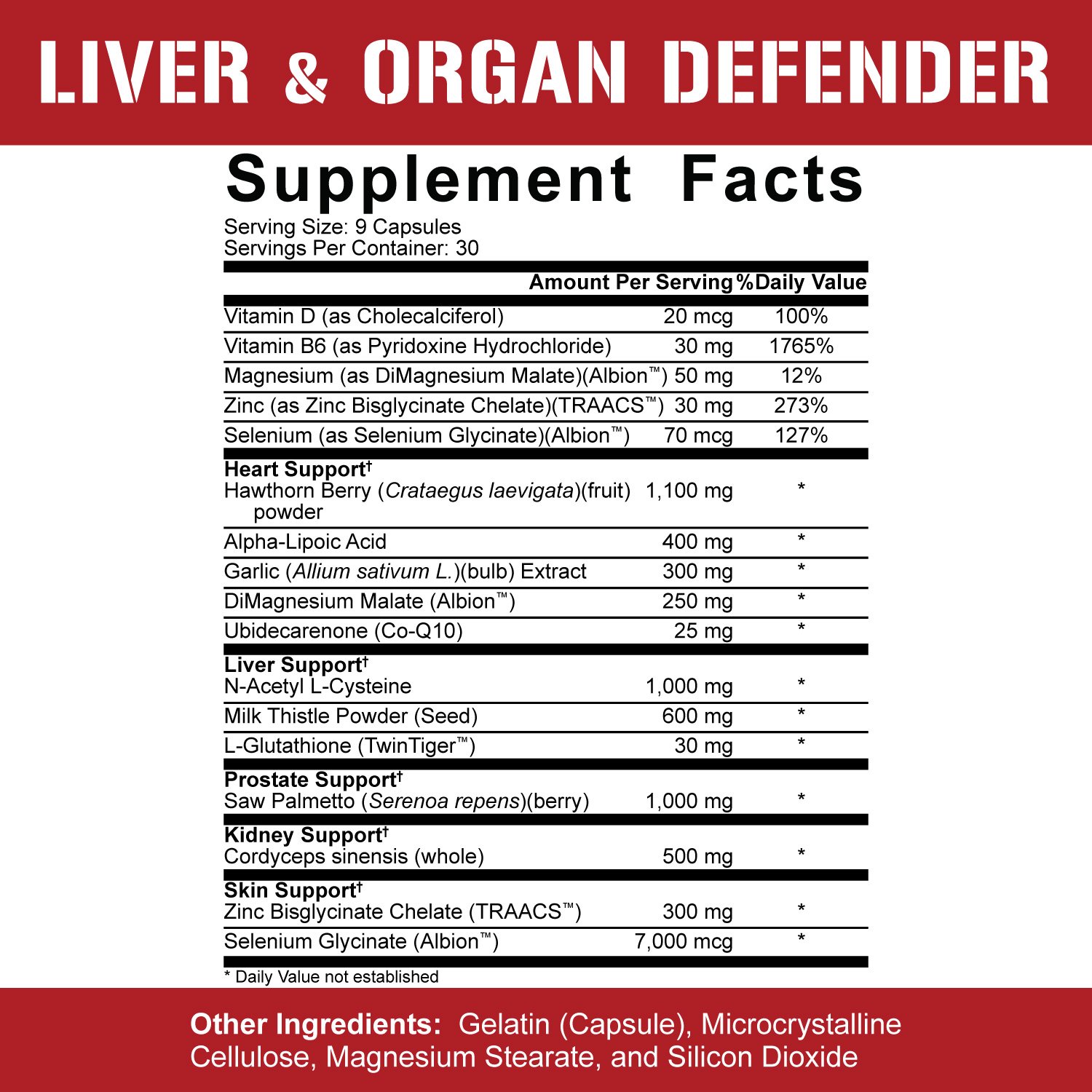
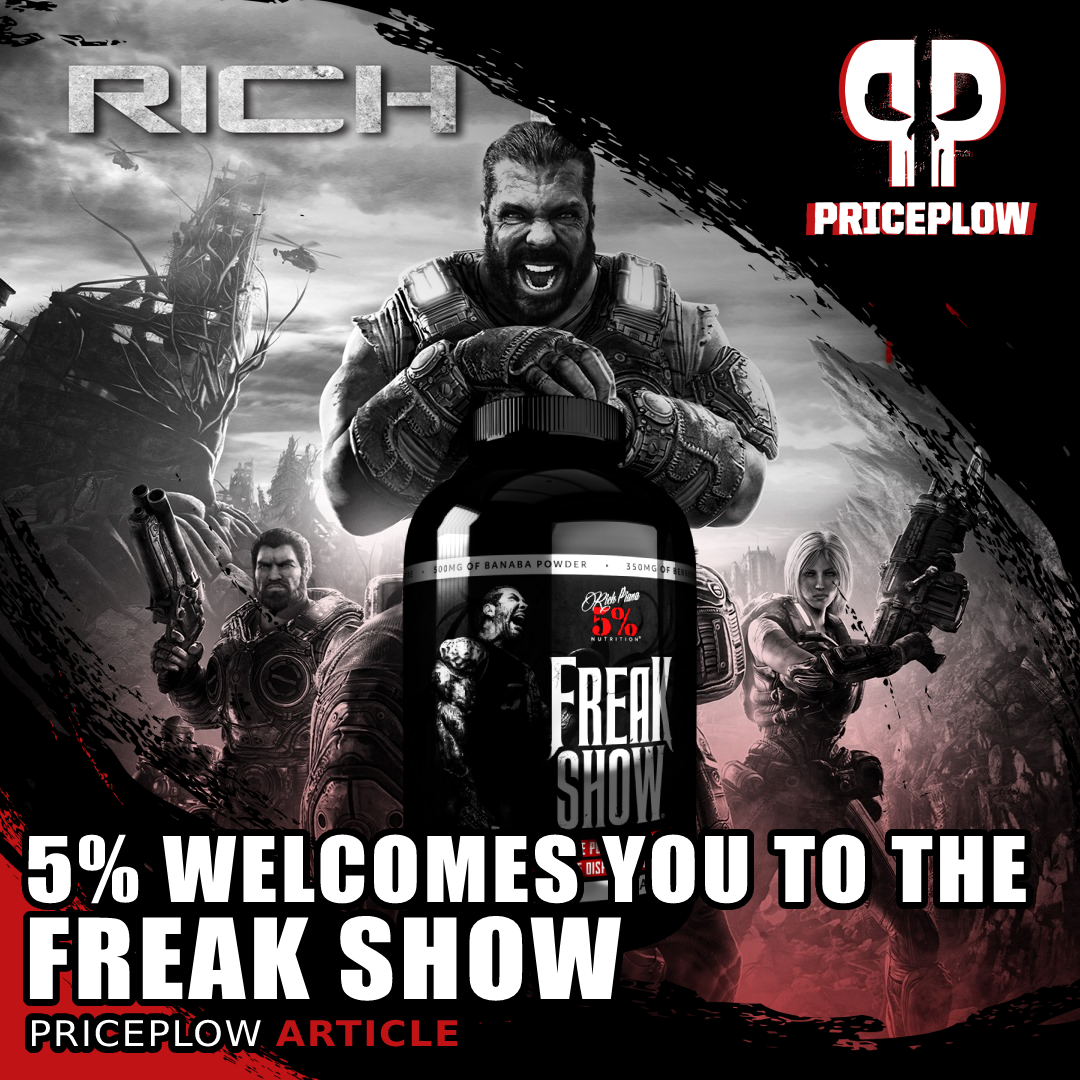
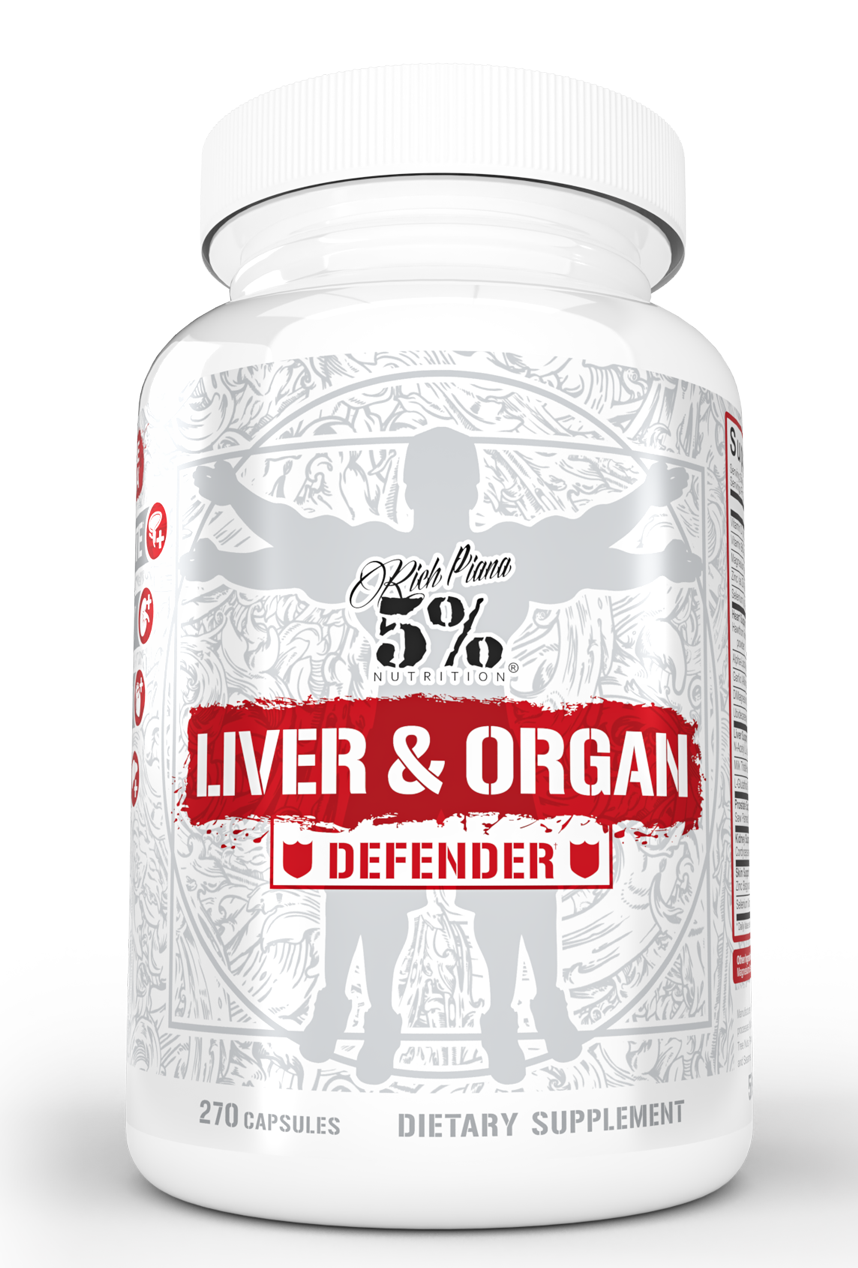
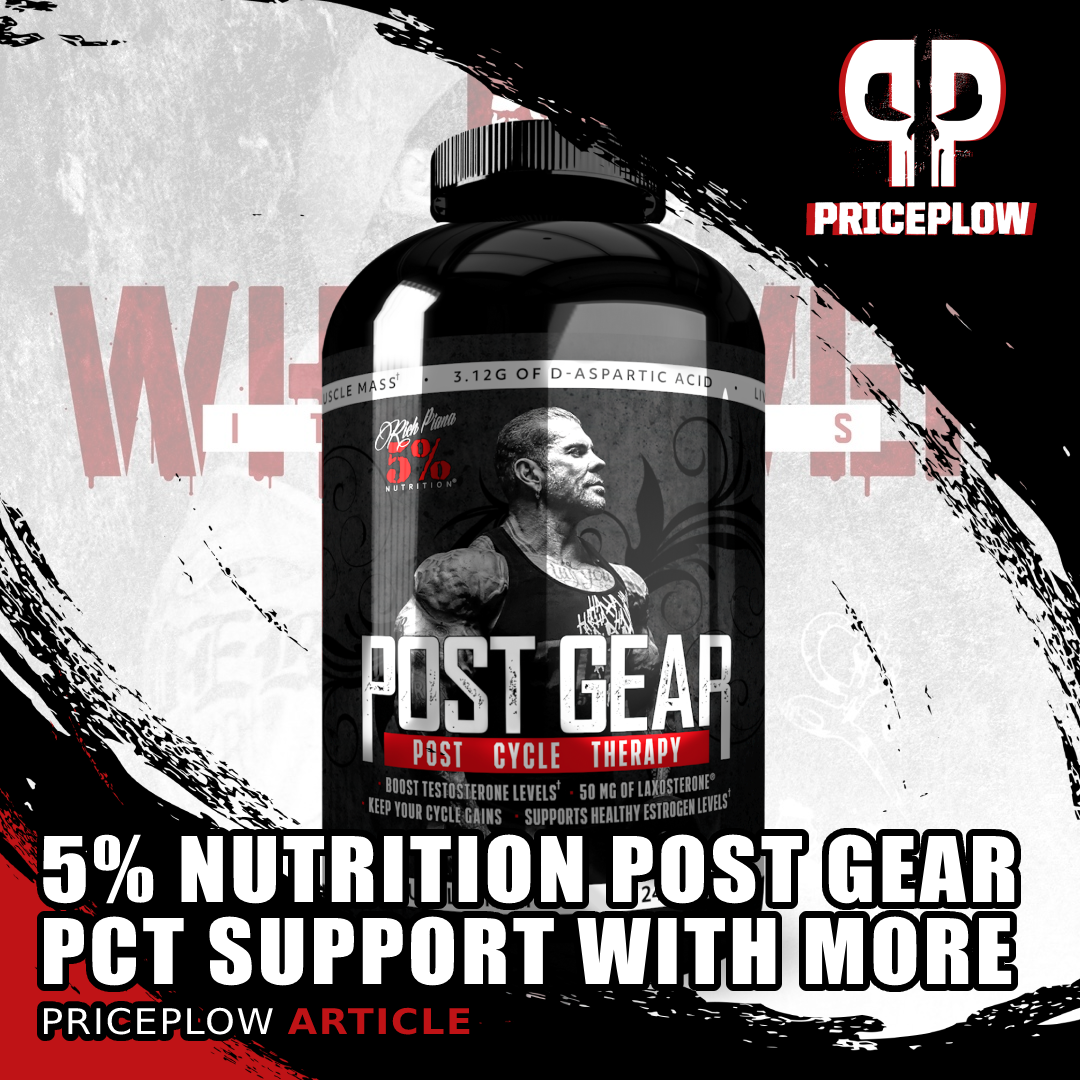


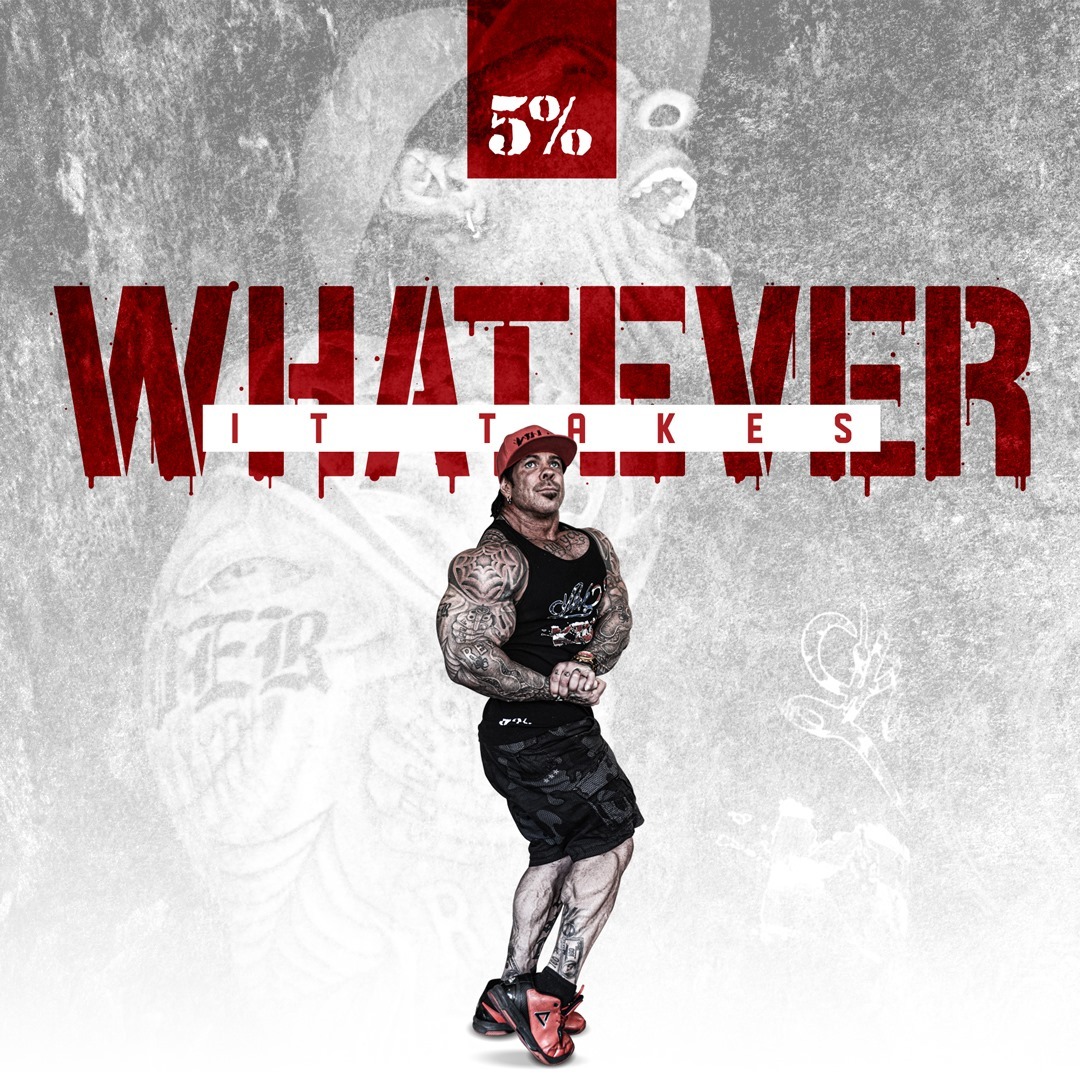


Comments and Discussion (Powered by the PricePlow Forum)